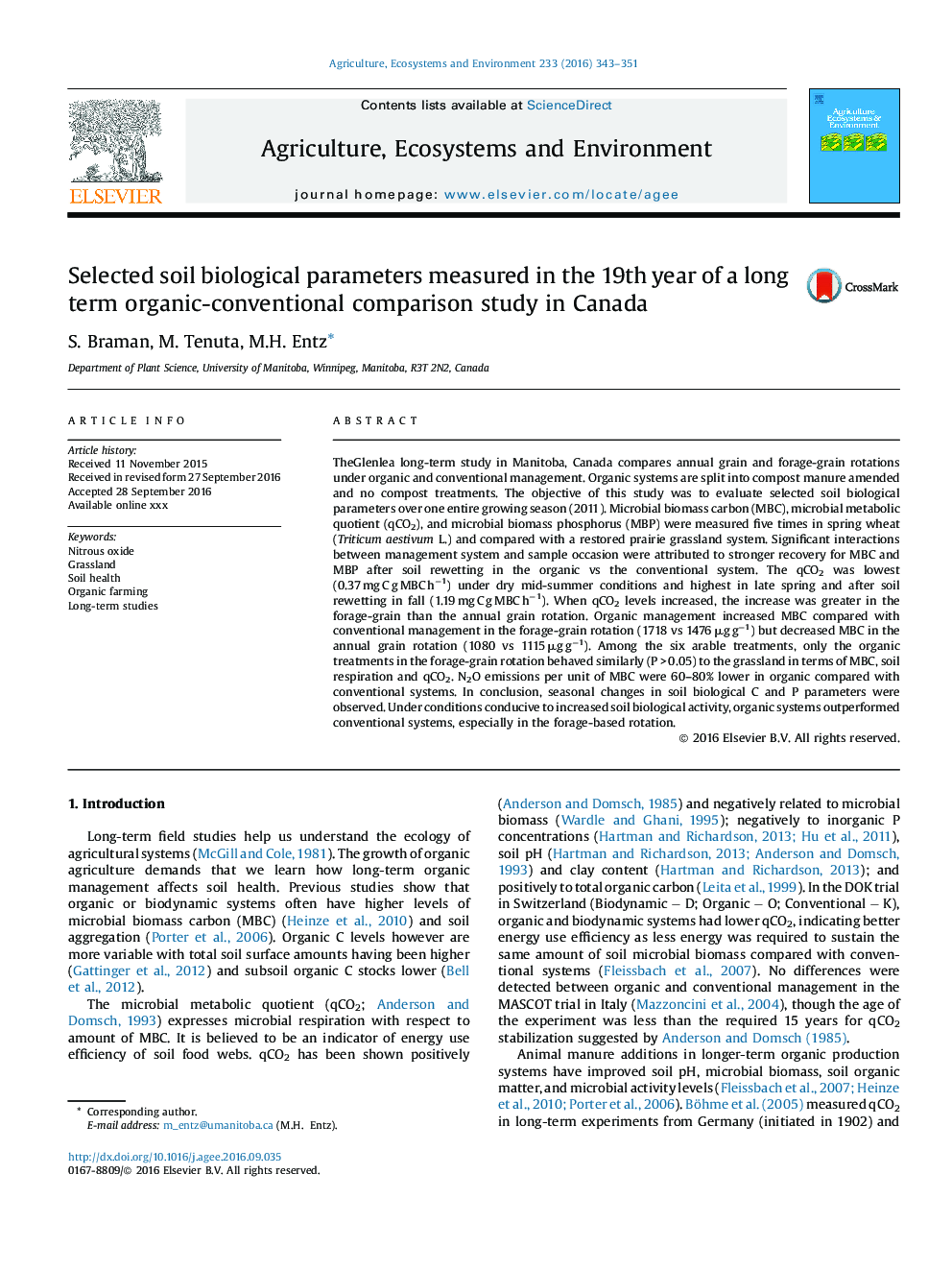| Article ID | Journal | Published Year | Pages | File Type |
|---|---|---|---|---|
| 8487288 | Agriculture, Ecosystems & Environment | 2016 | 9 Pages |
Abstract
TheGlenlea long-term study in Manitoba, Canada compares annual grain and forage-grain rotations under organic and conventional management. Organic systems are split into compost manure amended and no compost treatments. The objective of this study was to evaluate selected soil biological parameters over one entire growing season (2011). Microbial biomass carbon (MBC), microbial metabolic quotient (qCO2), and microbial biomass phosphorus (MBP) were measured five times in spring wheat (Triticum aestivum L.) and compared with a restored prairie grassland system. Significant interactions between management system and sample occasion were attributed to stronger recovery for MBC and MBP after soil rewetting in the organic vs the conventional system. The qCO2 was lowest (0.37 mg C g MBC hâ1) under dry mid-summer conditions and highest in late spring and after soil rewetting in fall (1.19 mg C g MBC hâ1). When qCO2 levels increased, the increase was greater in the forage-grain than the annual grain rotation. Organic management increased MBC compared with conventional management in the forage-grain rotation (1718 vs 1476 μg gâ1) but decreased MBC in the annual grain rotation (1080 vs 1115 μg gâ1). Among the six arable treatments, only the organic treatments in the forage-grain rotation behaved similarly (P > 0.05) to the grassland in terms of MBC, soil respiration and qCO2. N2O emissions per unit of MBC were 60-80% lower in organic compared with conventional systems. In conclusion, seasonal changes in soil biological C and P parameters were observed. Under conditions conducive to increased soil biological activity, organic systems outperformed conventional systems, especially in the forage-based rotation.
Related Topics
Life Sciences
Agricultural and Biological Sciences
Agronomy and Crop Science
Authors
S. Braman, M. Tenuta, M.H. Entz,
